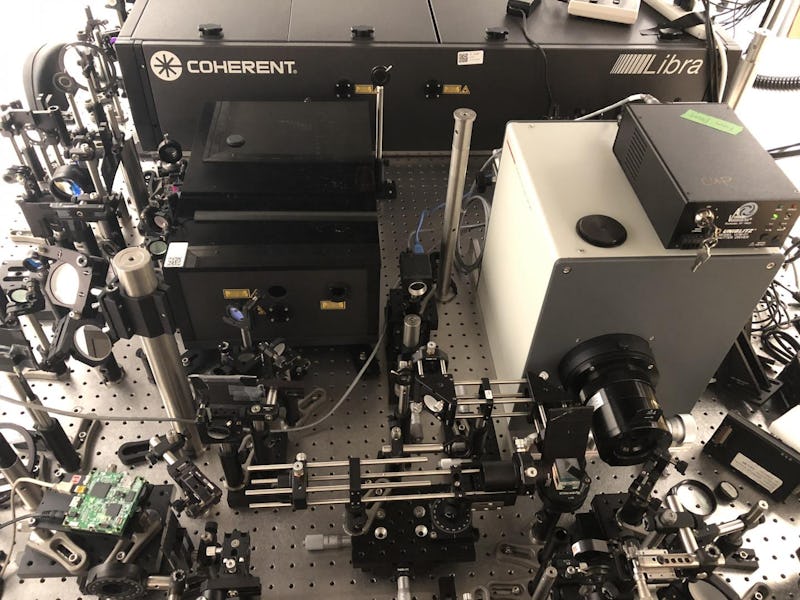A New 10 Trillion Frame per Second Super Camera Can Freeze Time
We can now watch light in slow motion.

Researchers at the Institut National de la Reserche Scientifique in France have developed a new kind of camera, called the T-CUP, which they say is capable of capturing images at 10 trillion frames per second, fast enough to view phenomena like light in slow motion.
That’s already fast enough to set a world record, but according to a statement the authors say that they have already identified possibilities to speed the process up even further, to one quadrillion frames per second. Their goal is to enable a new generation of microscopes and other imaging technologies capable of better analyzing the interactions between light and matter. Their findings were published in the latest issue of Light: Science & Applications.
To build their camera, the researchers improved upon a technique known as compressed ultra-fast photography (CUP), which can capture images at a sped of around 100 billion frames per second. Their new process combines what’s called a ‘streak camera” with a second, static camera to try and improve the image quality. The two images were then merged through a process called radon transformation, explained Caltech Professor Lihong Wang in a statement.
“We knew that by using only a femtosecond streak camera, the image quality would be limited,” she says. “To improve this, we added another camera that acquires a static image. Combined with the image acquired by the femtosecond streak camera, we can use what is called a Radon transformation to obtain high-quality images while recording ten trillion frames per second.”
Real-time imaging of temporal focusing of a femtosecond laser pulse at 2.5 Tfps.
What We Learn From Super-Fast Cameras
Professor Yang’s colleague, Jinyang Liang, developed a similar type of super-camera last year using a technique called “lossless-encoding compressed ultrafast photography” (LLE-CUP), which was capable of taking images at a rate of about 100 billion frames per second. In that case, the goal was to try and be able to capture footage of neurons firing in the brain, though, speaking with Inverse last November, Liang said the camera was actually too fast.
“We can [now] capture the data without motion-blurring,” Liang said at the time. “Maybe we’ll need to improve the depth resolution going forward, and then the camera has the potential for medical 3D imaging. That would be a quantum leap in those fields.”
The technology here is developing fast (sorry). The previous world record was held by a team in Sweden, who in 2017 announced that they had used a technique called Frequency Recognition Algorithm for Multiple Exposures to capture an image at a rate of 5 trillion frames per second.
Those researchers were focused on studying combustion reactions, and hoped their technique could help usher in next-generation engines with greater fuel efficiency.